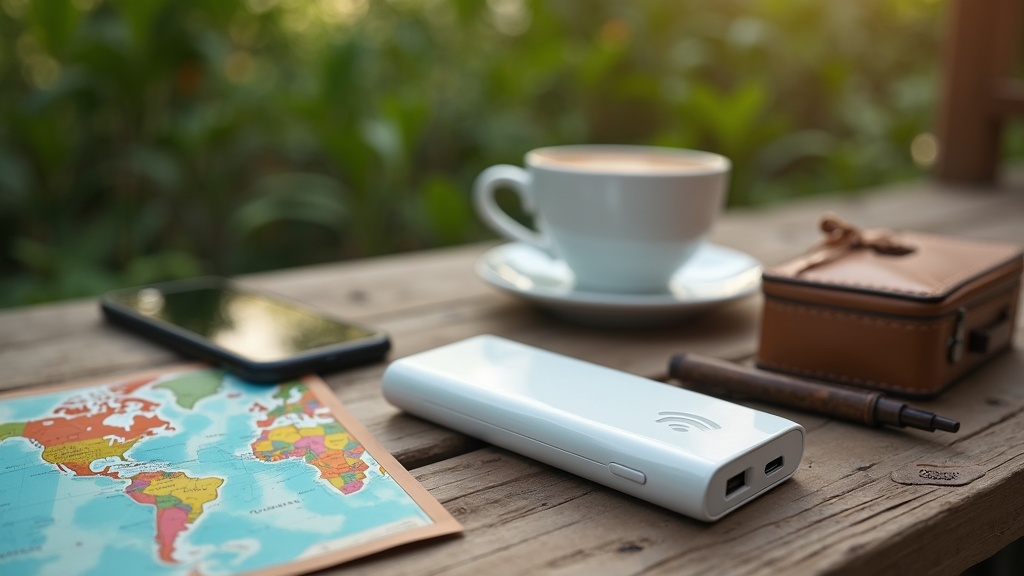Portable WiFi hotspots are a smart option to stay connected wherever life takes you. Whether you are heading out for a camping weekend, working remotely at a coffee shop, or traveling through areas with spotty cellular service, having your own reliable internet access makes life smoother. Plenty of portable hotspot options are available now, and picking one that fits your budget and needs can save a lot of hassle in the long run.

What Exactly Is a Portable WiFi Hotspot?
Portable WiFi hotspots (sometimes called MiFi devices or mobile hotspots) are little battery-powered gadgets that let you connect your phone, laptop, or tablet to the internet using cellular networks. These gadgets basically create a mini WiFi network for just you (or whoever you invite), so you’re not relying on the often risky public WiFi in airports, on cruises, hotels, or cafés.
If you’ve ever used the hotspot feature on your smartphone, the concept is pretty similar. Portable hotspots spare your phone’s battery, usually allow more connections, and work with data plans that can be more flexible than what’s included with your regular SIM. They’re super handy if you’ve got multiple devices or want to avoid burning through your phone’s data plan at lightning speed.
Getting Started With Portable WiFi Hotspots
Most hotspots are easy to set up. You’ll usually need a SIM card (either physical or eSIM) that’s activated with a data plan. Most devices have a simple interface that lets me connect new devices with a password, just like home WiFi. These gadgets range from basic, straightforward models to larger, feature packed versions that show data usage, battery life, and network strength on their own little screens.
There are two main types of devices to consider:
- Carrier Specific Hotspots: These are locked to one network (like Verizon, AT&T, or TMobile), so you pick one that matches your favorite carrier.
- Unlocked Hotspots: These let you use SIM cards from any provider, which works perfectly for international travel or hopping between U.S. networks when you need better coverage.
Benefits of Using a Portable Hotspot
Using a portable hotspot comes with several perks. Here’s what I appreciate most:
- Secure connection: Public WiFi can be a gamble. Portable hotspots use password protected networks, making it easier to keep my data private.
- Stay connected anywhere: If there’s cell coverage, I can usually get online. This is super helpful on road trips, while camping, or even in airports where free WiFi is limited.
- Share with others: Many devices allow five or more gadgets to connect at once, so friends or coworkers can get online together.
- Save on roaming fees: While traveling internationally, I pop in a local SIM and avoid those wild roaming charges that come with tethering my phone overseas.
How to Pick the Right Portable Hotspot
Finding the best hotspot for your needs means sizing up a few important details. Here are key things I always check out:
- Network compatibility: Make sure the device works with major carriers and supports the LTE or 5G bands you’ll use most often.
- Battery life: Some models have batteries that last just 68 hours, while others push 20 hours or more on a single charge. If you want all-day coverage, definitely go for something with a bigger battery.
- Maximum connections: If you have a family or a team, look for a device that allows at least 10 device connections at once for everyone’s needs.
- Data plan options: Some carriers offer unlimited plans, while others have pay-as-you-go models. Know your usage habits and choose a plan that won’t leave you stranded late in the month.
- Physical size and weight: Travel hotspots are usually small enough to slip in a pocket, but some with longer batteries can be a bit bulkier to carry around.
Common Challenges and How to Handle Them
- Coverage limitations: Hotspots rely on cellular service, so if you’re in a dead zone with no bars, WiFi simply won’t show up. Checking carrier maps before heading out is a smart move.
- Data usage: Streaming, video calls, and big downloads can eat through your data way faster than expected. Most devices let you keep tabs on your data right on their screen or with a companion app.
- Battery drain: When using your hotspot all day, a USB power bank is a must. I always pack one if I’ll be remote for a while.
- Device warmth: Extended use in hot spots or cramped spaces can make some devices heat up. Giving the gadget a break or placing it near a small fan can cool things down if it feels too hot.
Battery Life
Batteries on portable hotspots can last anywhere from a few hours to a full day, depending on use and model. If I plan to work remotely for long stretches or stream content, I charge overnight and carry a power pack. Some high-end hotspots even double as power banks, which is especially handy for giving my phone a quick boost.
Data Limits
Even so called “unlimited” data plans often come with a soft cap, where your speed drops after using a certain amount. Keeping an eye on your data counter helps you avoid these slowdowns, and some gadgets send notifications right when you’re getting close to your usage limit.
Coverage
One trick is to carry an unlocked device and pick up local SIM cards when traveling to rural or international spots. This keeps costs low and ensures strong coverage wherever I go.
Managing Network Congestion
Busy places like sporting events, airports, or festivals can strain mobile networks and slow things down. Occasionally, switching to a less busy carrier or moving away from crowds brings the connection back up to speed.
Hot Features That Make Life Easier
Brands keep tossing cool features into the mix to grab your attention. Here are several you might find genuinely useful:
- Touchscreens: Many new hotspots have colorful touchscreens so you can check signal strength, adjust settings, and see data usage clearly and easily.
- eSIM support: No more searching for tiny plastic SIM cards while abroad. Digital SIMs are rising in popularity and let you switch plans with just a few taps.
- External antenna ports: If you’re often in low signal areas, plugging in a portable antenna on some models can seriously increase your speed and reception.
- Expandable storage: Some models include microSD slots so you can share files over your hotspot’s network, almost like a mini home server on the go.
Putting Portable Hotspots to Use: Real-Life Examples
- Remote workers: Mobile hotspots are true lifesavers for those work- from -anywhere situations; whether in parks, coffee shops, or even during long car waits, staying connected is a breeze.
- Frequent travelers: For folks driving cross country or exploring cities abroad, they offer reliable Google Maps refreshes and make music streaming possible wherever you end up.
- Families: On road trips, kids can stay entertained and everyone’s devices stay online for GPS, music, and games. No more arguing over a single weak phone hotspot.
- Emergencies: When storms take down your home internet, a battery-powered hotspot is a key fallback to keep everyone online and less stressed out.
Frequently Asked Questions
Here are answers to some common questions about portable hotspots:
Q: Can I use a portable hotspot while traveling internationally?
A: Yes; if your device is unlocked, just insert a local SIM. You’ll get local rates and usually better coverage than sticking with your home carrier’s roaming plan.
Q: How many devices can connect at once?
A: It varies; most portable hotspots allow 515 connections at a time, but always check the specs if you plan to share with a larger group.
Q: Are hotspots faster than smartphone tethering?
A: Sometimes! Hotspots are designed for sharing and usually support more connections. They can also use bigger external antennas for improved reception and are less likely to overheat during long use.
Q: Do I need a separate data plan?
A: Generally, yes. While some carriers let you share your phone plan with your hotspot, the best speeds and flexibility usually come from using a dedicated SIM and data plan.
Making the Most of Your Portable Hotspot
Setting up a portable WiFi hotspot is a flexible way to get online from almost anywhere. Picking the right gadget with good battery life, solid coverage, and a data plan that fits your needs can make travel, business, or weekends outdoors less stressful and much more connected. Keeping an eye on your data and making regular charging a habit rounds out the best experience, so you’re always ready to get online at a moment’s notice.
